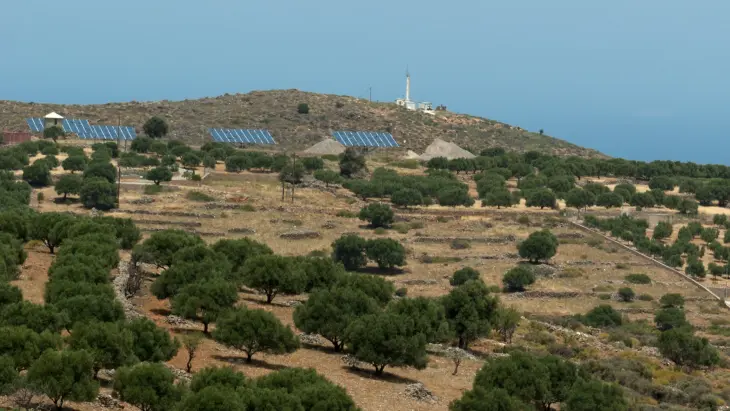The Energy ministry in Greece has shared an updated National Energy and Climate Plan with market officials for their input in consultation until August 28, writes Balkan Green Energy News. Notably, this updated NECP incorporates revisions to 2030 targets that were initially outlined by the ministry in January pertaining to the installed capacity of power stations and energy storage units. The new draft will now be discussed with local energy and environmental bodies before a final version is sent to the EU executive in October.
There are minor adjustments in the RES capacity targets, a 79% share of renewables in power production by 2030, versus 80% originally, which translates to 13.5 new gigawatts compared to 14.7 GW announced in January. Photovoltaics have been reduced to 13.4 GW from 14.1 GW, while the onshore wind energy target has been upgraded to 7.6 GW from 7 GW. When it comes to offshore wind, the goal is set at 1.9 GW, down from 2.7 GW in the original plan. The goal for other renewable energy sources remains at 800 MW.
The January version was largely regarded as excessively ambitious and evidently unattainable. The updated NECP encompasses projections detailing the anticipated trajectory of consumer electricity prices up until 2030 and 2050. The wholesale price is projected to decline to EUR 132.6/MWh by 2030 from EUR 187.1/MWh in 2021. However, this price is higher than what it was in previous years even though the ministry expects a reduction after 2030. Additionally, this refined version incorporates estimations regarding the necessary levels of investment and consumer expenditures required to align with the objectives of climate targets.
The targets outlined in the proposal, which indicate the expected status of each technology within the national electricity system after a decade, should be viewed as preliminary. In the final version of the text, the energy ministry is expected to incorporate further amendments to the relevant figures after having taken into consideration the insights and suggestions provided by various market players.
The draft currently undergoing consultation includes a slight correction concerning the projected involvement of Renewable Energy Sources (RES) in the energy mix for 2030. Specifically, RES participation in gross final energy consumption has been adjusted to 44%, a marginal decrease from the previously presented 45% in January.
Additionally, RES contribution to electricity generation has been refined to 79%, reflecting a minor adjustment from the earlier figure of 80%.
An unpleasant surprise for energy storage investors
The revised NECP includes a significant cut in batteries, whose installed capacity in 2030 has now been set at 3.1 GW, from 5.6 GW. The target for pumped-storage units has also been reduced to 2.2 GW from 2.5 GW.
On the contrary, the 2030 target for installed gas-fueled power stations has been increased to 7.7 GW from 7 GW, while lignite-fired power stations are expected to be fully withdrawn by 2030.
The ministry aims to soon finalize its revised NECP for submission to the European Commission by October, as is expected of all member states.
Another crucial aspect of the plan is energy efficiency, where the goal is set at 5% more savings by 2030. However, this percentage steeply rises afterwards, to 14% by 2035.
Green hydrogen has been boosted from 1.2 GW earlier to 1.7 GW in the new plan, which translates to 135 million tons, in order to decarbonize hard-to-abate sectors, such as transportation and industry.
Last but not least, greenhouse gas emissions in Greece are expected to be reduced by 54% by 2030 compared to 1990 (without Land Use, Land-Use Change and Forestry – LULUCF) and by 57% including LULUCF.
